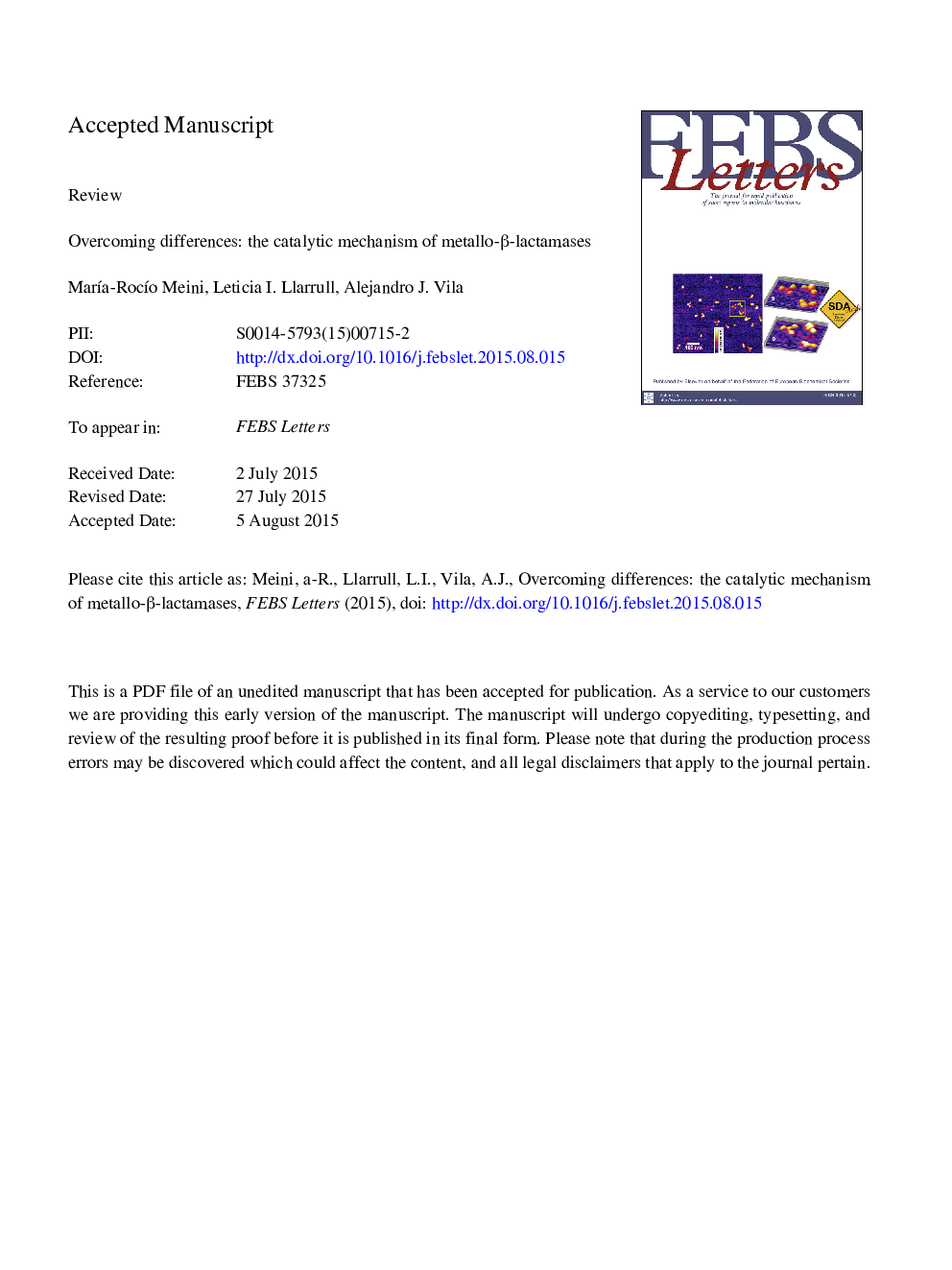| Article ID | Journal | Published Year | Pages | File Type |
|---|---|---|---|---|
| 10869833 | FEBS Letters | 2015 | 41 Pages |
Abstract
Metallo-β-lactamases are the latest resistance mechanism of pathogenic and opportunistic bacteria against carbapenems, considered as last resort drugs. The worldwide spread of genes coding for these enzymes, together with the lack of a clinically useful inhibitor, have raised a sign of alarm. Inhibitor design has been mostly impeded by the structural diversity of these enzymes. Here we provide a critical review of mechanistic studies of the three known subclasses of metallo-β-lactamases, analyzed at the light of structural and mutagenesis investigations. We propose that these enzymes present a modular structure in their active sites that can be dissected into two halves: one providing the attacking nucleophile, and the second one stabilizing a negatively charged reaction intermediate. These are common mechanistic elements in all metallo-β-lactamases. Nucleophile activation does not necessarily requires a Zn(II) ion, but a Zn(II) center is essential for stabilization of the anionic intermediate. Design of a common inhibitor could be therefore approached based in these convergent mechanistic features despite the structural differences.
Related Topics
Life Sciences
Agricultural and Biological Sciences
Plant Science
Authors
MarÃa-RocÃo Meini, Leticia I. Llarrull, Alejandro J. Vila,
